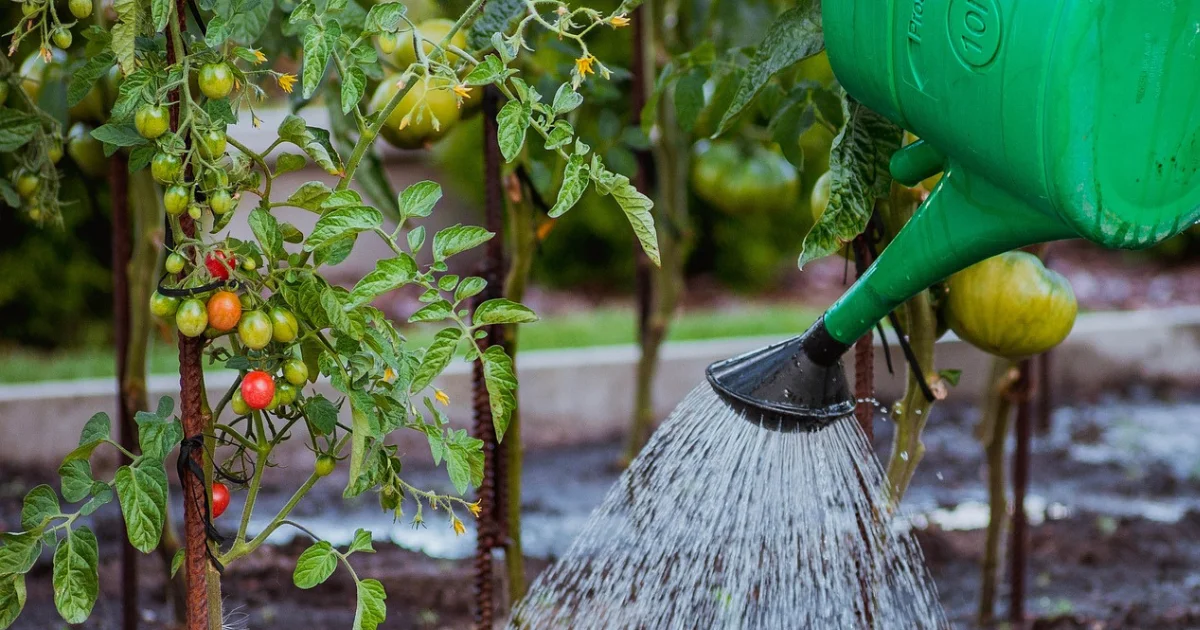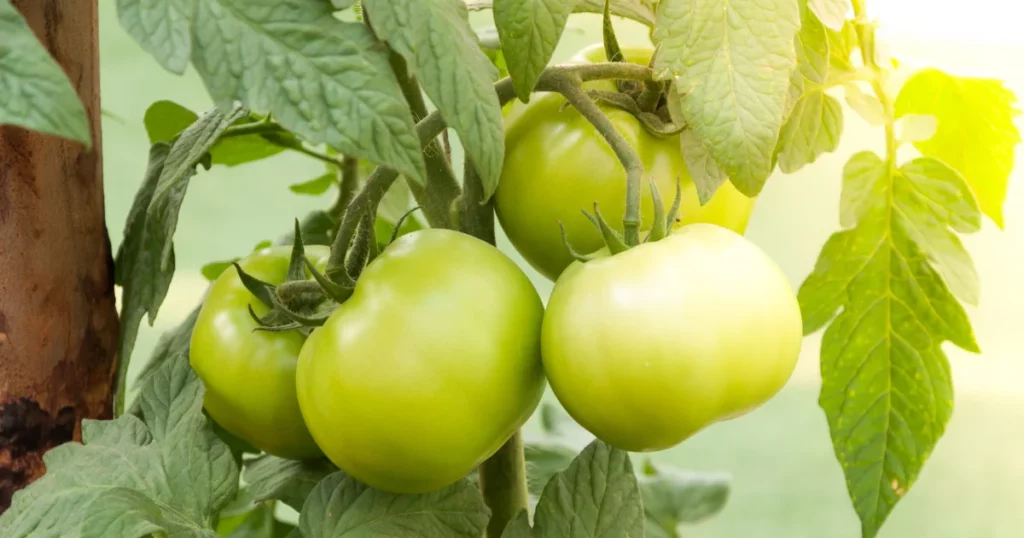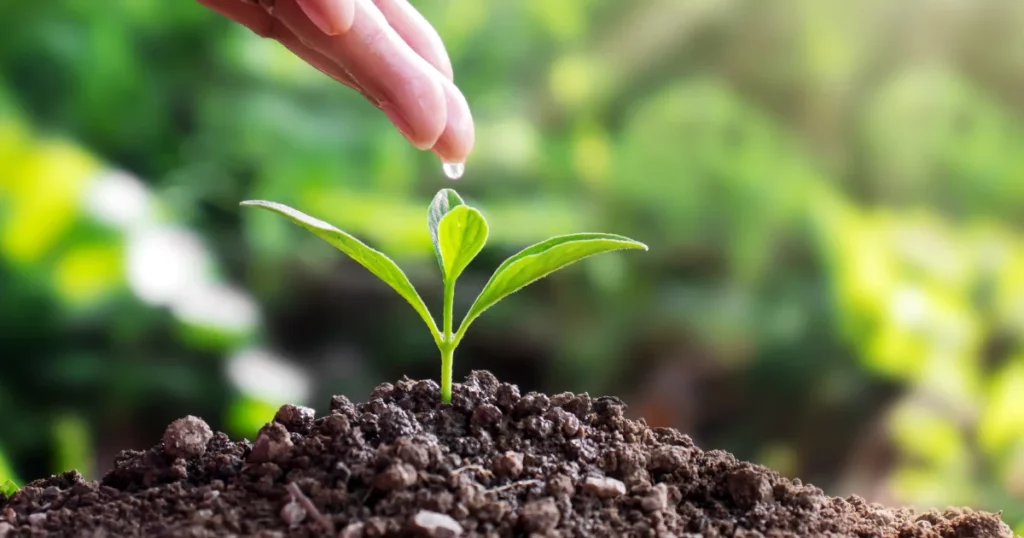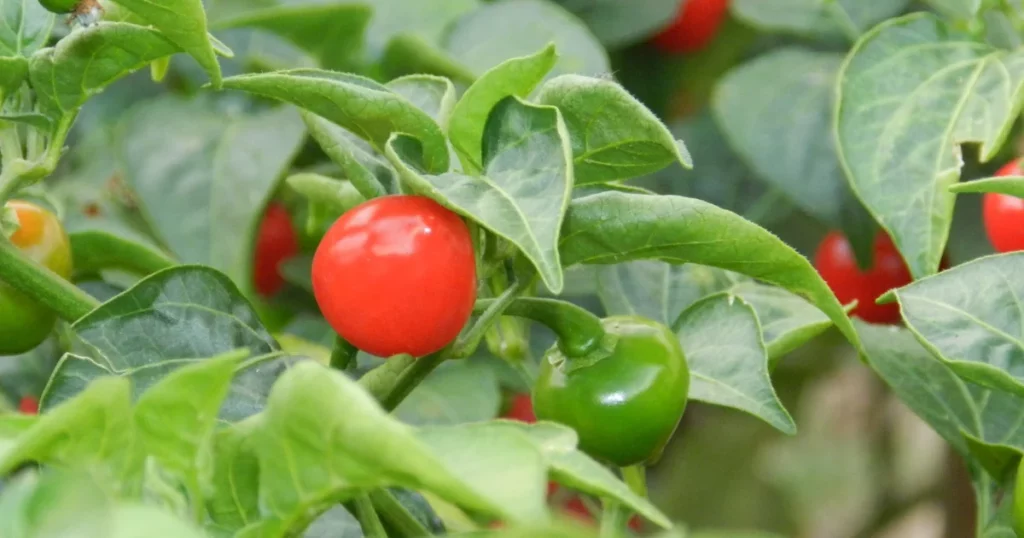Tomato Plant Watering 101: How Often to Water Tomato Plants

Whether you’re a seasoned gardener or just starting out, understanding the nuances of watering can make a significant difference in the health and yield of your tomato plants.
In this article, we delve into effective watering techniques tailored for every stage of your tomato plant’s life. From the delicate seedling stage to the robust fruiting phase, each period has its unique watering needs.
Additionally, we recognize that tomatoes grow in various environments. Whether your plants are in pots, sprawling across raised beds, or nestled in traditional garden beds, each setting demands a specific approach to watering.
By the end of this guide, you’ll be equipped with the knowledge to provide just the right amount of water to your tomato plants, ensuring they thrive and produce bountiful, delicious tomatoes.
Understanding Tomato Plant Water Needs
First things first, let’s talk about what your tomato plants actually need in terms of water. You see, tomatoes aren’t too picky, but they do have specific needs. The amount of water your tomato plants require depends on several factors, including the climate you’re in, how much natural rainfall you get, the type of soil you have, and the stage of growth your plants are in.
- Climate and Rainfall: If you’re gardening in a hot, arid area, your tomatoes will need more frequent watering compared to a humid, rainy climate. It’s all about balancing what Mother Nature provides with what you need to supplement. For instance, after a heavy rain, you can skip watering for a bit as the soil will retain enough moisture.
- Soil Type: The ideal soil for tomatoes is rich, organic, and well-draining. If you’re using raised beds or containers, pick a potting soil that drains well but also holds moisture. Adding organic matter at the time of planting can really help. Remember, tomatoes like their soil to dry out a bit between waterings, so if you have heavy clay soil, you might need to amend it to improve drainage.
- Growth Stages: The watering needs of your tomatoes will change as they grow. Young seedlings need consistent moisture to establish a strong root system. As they mature, they can handle slightly drier conditions. But when they’re fruiting, consistent watering is key to prevent issues like blossom end rot.
Related: Why Are Tomatoes Flowering But Not Fruiting?
How Do I Know If My Tomato Plants Need Water?

When caring for tomato plants, it’s important to recognize the signs that they need water. Pay attention to these critical indicators:
- Wilting Leaves: This is a common sign of underwatering. Tomato leaves are thin and can wilt quickly when dehydrated. If leaves appear droopy or limp, it’s a signal that the plant needs water.
- Weak Stems: Tomato stems can become weak and droop due to lack of water. This is especially concerning if the stems begin to snap under the weight of the fruit, indicating severe dehydration.
- Yellowing Leaves: Insufficient watering can cause tomato leaves to turn yellow. This yellowing is often patchy and indicates a lack of chlorophyll due to poor water and nutrient uptake.
- Lack of Flowers or Blossom Drop: A tomato plant that is not getting enough water may fail to produce flowers, or its blossoms may drop prematurely. This lack of flowering or blossom drop can significantly impact fruit production.
- Stunted Growth: Underwatered tomato plants often exhibit stunted growth. They may fail to produce new leaves, extend stems, or develop new flowers, resulting in limited overall growth.
- Curling Leaves: Tomato leaves may curl up when the plant is underwatered. This curling is a response to low humidity and water stress.
- Fragile Fruit: Tomatoes that don’t receive enough water can become fragile, impacting both the quantity and quality of the fruit.
Best Way to Water Tomato Plants: Combining Ideal Frequency with Growth Maximization
Watering Tomato Seedlings:
- A light watering once a day or every other day should be sufficient, depending on your soil and climate.
- Keep the soil consistently moist but not waterlogged. Overwatering can be just as harmful as underwatering at this stage.
Watering New Tomato Transplants:
- Regardless of whether they are in pots, raised beds, or garden beds, new tomato transplants need daily watering.
- Aim for the water to reach about 8 inches deep into the soil. This helps establish strong roots.
Watering Established Tomato Plants:
- The watering needs to change as your tomatoes grow.
- Once the plants are actively growing, the frequency and amount of water will vary depending on the location (pots, raised beds, or garden beds) and weather conditions.
- Reduce the amount of water as tomatoes start to ripen to avoid issues like blossom end rot and cracking.
Watering Tomatoes during the Fruiting Stage:
- This is critical. Inconsistent watering can cause the fruit to crack.
- How often do you water tomato plants when fruiting? As they mature and start to flower and bear fruit, the frequency changes – daily for those in containers and once a week for a deep watering in the garden.
Watering Potted Tomatoes:
- Water potted tomatoes frequently to keep the soil moist, but not soggy.
- In hot or dry conditions, you might need to water them once or even twice a day.
- Mature plants in pots can use up to a gallon of water daily, especially in hot, dry conditions.
Watering Tomatoes in Raised Beds:
- Water deeply for 20-30 minutes, three to four times a week.
- If you have a shallower bed, check daily for signs of dehydration.
- Soaker hoses set on timers are a great way to ensure efficient watering.
Watering Tomatoes in Garden Beds:
- For the first week or 10 days after transplanting, water daily.
- Once roots are established, reduce watering to three to four times a week.
- Use a soaker hose for 30 minutes to two hours, depending on weather and soil conditions.
Methods for Watering Tomato Plants

Now, let’s explore the different ways you can water your tomatoes. Each method has its pros and cons, and choosing the right one can depend on the size of your garden, your personal preferences, and the resources you have at hand.
- Watering Can: If you have a small garden, a watering can is a simple and effective tool. It allows you to control where the water goes, ensuring it reaches the base of the plant. Look for one with a rose spout to avoid displacing the soil with a harsh stream of water. Remember, always water at the base, not the leaves, to prevent disease.
- Hose with Watering Wand: This is great for larger gardens. A watering wand attached to your hose lets you water deeply and directly at the base of the plant. It’s a bit more work but gives you the chance to check on each plant as you water.
- Soaker Hose: This is a fantastic low-effort method, especially for larger gardens. A soaker hose slowly releases water along its length, delivering moisture directly to the soil and roots. It’s efficient and reduces water waste.
- Drip Irrigation: Arguably the most effective method, drip irrigation delivers water right to the base of each plant through tubes or emitters. It’s great for ensuring even watering and conserving water. Setting it up requires some effort, but once it’s in place, it’s a game-changer, especially if you connect it to a timer.
Also Read: What to Do With Tulips After They Bloom?
Tips for Effective Watering
Alright, let’s get into some practical tips to make your watering efforts more effective. As I’ve discovered in my gardening journey, it’s not just about how much you water, but how you water.
- Deep and Slow Watering: When watering your tomatoes, take your time to water slowly and deeply. This method encourages the roots to grow downward, seeking moisture, which leads to stronger plants. Aim for the water to penetrate at least 6-8 inches deep into the soil. You can check this by sticking a finger or a small shovel into the soil after watering to ensure that the moisture has reached deep enough.
- Morning Watering: Watering in the morning is ideal. It helps the soil retain moisture throughout the heat of the day and reduces the evaporation rate. Plus, it gives the foliage, if it gets wet, time to dry out, reducing the risk of disease.
- Water at the Plant’s Base: Focus on watering the soil around the base of your tomato plants rather than the leaves. Watering from above can lead to fungal diseases and pest infestations. A targeted approach ensures that the water goes directly to the roots where it’s needed most.
Common Watering Mistakes and How to Avoid Them
Even the most experienced gardeners can make mistakes, but learning from them is key. Here are a couple of common pitfalls and how to steer clear of them:
- Avoid Overwatering and Underwatering: It’s a delicate balance. Overwatering can lead to root rot and disease while underwatering can stress plants. Check the soil moisture before watering; it’s better to water deeply and less frequently to encourage deeper root growth.
- Be Mindful of Watering Technique: Water directly at the base of the plants, not the leaves. Wet leaves can promote fungal diseases and sunburn. Using a soaker hose or drip irrigation can be more effective and efficient than overhead watering.
- Understand Your Plants’ Needs: Different plants have varying water requirements. Group plants with similar watering needs together, and research the specific needs of each plant. There’s a diversity in plants’ soil moisture needs: some demand constantly moist soil, while others perform optimally in drier soil conditions.
- Consider the Time of Day for Watering: The best times to water are early morning or early evening. Avoid watering in the heat of the day as it leads to evaporation and less water reaching the roots. Nighttime watering can increase the risk of disease.
- Utilize Mulching: Mulching helps retain soil moisture, reduces evaporation, and can also add nutrients to the soil. It’s an effective way to maintain consistent soil moisture levels.
- Don’t Neglect Drainage: Ensure proper drainage in your garden. Insufficient drainage often results in excessively moist soil, creating an unhealthy environment for plant roots.
- Take Advantage of Rainwater: Collecting and using rainwater can be beneficial for your plants, as it is often softer and contains fewer chemicals than tap water.
- Know Your Soil Type: Soil composition affects water absorption and retention. Sandy soil drains quickly, while clay retains moisture longer. Adjust your watering strategies according to your soil type.
- Avoid Watering with a Hose When Possible: Using a hose or overhead sprinklers can be wasteful. Consider drip irrigation or other efficient watering systems.
- Learn From Your Garden: Pay attention to how your plants respond to watering and adjust your methods accordingly. Gardening often involves trial and error, and what works best can vary greatly depending on your specific environment and plant types.
See Also: Gardening Tools List With Pictures and Their Uses
Tomato Watering FAQs

How often to water tomato plants in the winter?
In winter, water indoor overwintered tomato plants less frequently, allowing the soil to dry slightly between waterings. For potted tomatoes, maintain consistent moisture, watering when the top soil inch feels dry. In sandy soil, water every three to four days, and in raised beds, water deeply but less frequently.
How often to water tomatoes with drip irrigation?
When using drip irrigation for tomatoes, typically water them for about 30 to 60 minutes per session, 2-3 times a week. Adjust the frequency based on weather and soil conditions, ensuring that the soil is moist to a depth of 6-8 inches. In hotter or drier conditions, increase frequency as needed.
When should you not water tomatoes?
Avoid watering tomatoes during the heat of the day to minimize evaporation and prevent sunscald. Also, don’t water if the soil is already moist, as overwatering can lead to root rot and other diseases. Reduce watering when tomatoes begin ripening to enhance flavor and prevent fruit cracking.
What is the best time of day to water tomato plants?
The best time to water tomato plants is early in the morning. This allows the water to reach the roots before the heat of the day and reduces evaporation. Morning watering also helps leaves dry out quickly, reducing the risk of fungal diseases that can thrive in damp conditions.
How often to water tomatoes in a greenhouse?
In a greenhouse, tomatoes should generally be watered every three days until flowering and fruit set begin, after which you can reduce the frequency to about once a week. Adjust the schedule based on the greenhouse conditions, plant variety, and observed plant needs
Should you water tomatoes every day?
Tomatoes should not be watered every day unless conditions are extremely hot and dry. Instead, they typically need watering once every 2-3 days, depending on the weather and soil moisture. Consistently overwatering can harm the root system, leading to diseases, and can also degrade the quality of the fruit yielded. It’s essential to check soil moisture before watering.
Must Read: Tips to Grow Radishes in Pots or Containers Indoors
Conclusion
Remember that watering your tomato plants is more than just a routine—it’s a crucial part of their care. By understanding their needs and responding appropriately, you’re setting the stage for a thriving garden.
Keep in mind that every garden is unique, so what works for one may not work for another. Pay attention to your plants and soil, and they’ll tell you what they need. Trust me, there’s nothing quite as satisfying as biting into a juicy tomato that you’ve nurtured from seed to fruit.
So, stay patient, observant, and consistent with your watering, and you’ll be rewarded with a bountiful harvest!
